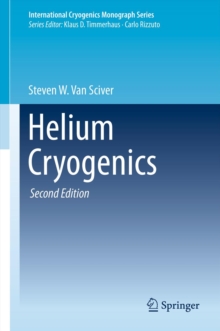
Cryostat Design : Case Studies, Principles and Engineering PDF
Edited by J.G. Weisend II
Part of the International Cryogenics Monograph Series series
Description
This book enables the reader to learn the fundamental and applied aspects of practical cryostat design by examining previous design choices and resulting cryostat performance. Through a series of extended case studies the book presents an overview of existing cryostat design covering a wide range of cryostat types and applications, including the magnet cryostats that comprise the majority of the Large Hadron Collider at CERN, space-borne cryostats containing sensors operating below 1 K, and large cryogenic liquid storage vessels.
Information
-
Download - Immediately Available
- Format:PDF
- Publisher:Springer International Publishing
- Publication Date:12/08/2016
- Category:
- ISBN:9783319311500
Information
-
Download - Immediately Available
- Format:PDF
- Publisher:Springer International Publishing
- Publication Date:12/08/2016
- Category:
- ISBN:9783319311500










